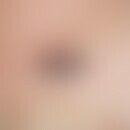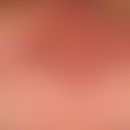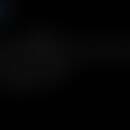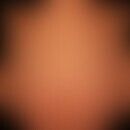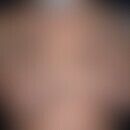Synonym(s)
amelogenesis imperfecta; enamel hypoplasia with curly hair; Hair-Tooth-Bone Syndrome; kinky hair syndrome; Robinson-Miller-Worth syndrome; taurodentism; taurodontism; TDO syndrome; tricho-dento-osseous syndromes
HistoryThis section has been translated automatically.
Robinson, 1966; Liechtenstein, 1972
DefinitionThis section has been translated automatically.
Special form of ectodermal dysplasia with tooth and hair anomalies in combination with osteosclerosis. Clinically, 3 types are distinguished, whereby type II and III differ from type I by facial shape and radiological changes.
You might also be interested in
EtiopathogenesisThis section has been translated automatically.
Autosomal dominant with variable expressivity inherited mutations of the distal-less3 gene (DLX3) and the distal-less7 gene (DLX7) mapped on chromosome 17q21.2-q22
ClinicThis section has been translated automatically.
Changes in hair, teeth, nails, facial dysplasia and radiologically detectable deformities of the skeleton. Normal intelligence. Depending on the clinical symptoms there are 3 types:
- Type I: Hair dysplasia: Small curly, dense hair in childhood. Tooth anomalies: Enamel hypoplasia and undercalcification, small teeth that are rapidly worn down to the gingiva, wide diastemata, taurodontia of the molars, tooth discoloration, gingival abscesses, tooth loss in the 2nd-3rd decade of life. Nail dystrophy: Flat, thickened, stripy nails that become easily brittle. Facial dysplasia: Dolichocephaly (sometimes premature suture synostoses) with balcony forehead; facial asymmetry. X-ray: osteosclerosis of the skull bones, also of the base of the skull; normal development of intelligence.
- Type II: Hair dysplasia: Small curly hair from birth, thin, slightly falling hair, little or no axillary and pubic hair, little facial hair in affected men. Dental dysplasia: hypoplasia of the enamel and undercalcification, abscesses, taurodontia of the molars, open roots of the incisors. Nail dystrophy: thin, flat, brittle nails. Facial dysmorphia: Prognathism; prominent forehead. The intelligence is normal.
- Type III: Hair dysplasia: Small curly hair, hypotrichosis of facial hair in men. Dental dysplasia: small teeth, wide diastemas, enamel hypoplasia and undercalcification, taurodontia of molars, abscesses, open necks of teeth, caries tendency. Nail dysplasias: Brittle nails. Facial dysplasias: Prominent forehead, square chin. Normal intelligence.
LiteratureThis section has been translated automatically.
- Aldred MJ, Crawford PJM (1988) Variable expression in amelogenesis imperfecta with taurodontism. J Oral Catholic 17: 327-333
- Crawford PJM, Aldred MJ (1990) Amelogenesis imperfecta with taurodontism and the tricho-dento-osseous syndrome: separate conditions or a spectrum of disease? Clin Genet 38: 44-50
- Dodds AP et al (2003) Characterization and mRNA expression in an unusual odontogenic lesion in a patient with tricho-dento-osseous syndrome. Histol Histopathol 18: 849-854
- Hart TC (1997) Genetic linkage of the tricho-dento-osseous syndrome to chromosome 17q21. hum mol Genet 6: 2279-2284
- Jorgenson RJ, Warson RW (1973) Dental abnormalities in the tricho-dento-osseous syndrome. Oral Surgery 36: 693-700
- Leisti J, Sjöblom SM (1978) A new type of autosomal dominant tricho-dento-osseous syndrome. Proceedings of Birth Defects Conference (abstr.) XI: 58.
- Lichtenstein J, Warson R, Jorgenson R et al (1972) The tricho-dento-osseous (TDO) syndrome. At J Hum Genet 24: 569-582
- Melnick M, Shields ED, El-Kafrawy AH (1977) Tricho-dento-osseous syndrome: a scanning electron microscopic analysis. Clin Genet 12: 17-27
- Price JA (1998) Identification of a mutation in DLX3 associated with tricho-dento-osseous (TDO) syndrome. Hum Mol Genet 7: 563-569
- Robinson GC et al (1966) Hereditary enamel hypoplasia, its association with characteristic hair structure. Pediatrics 37: 498-502
- Shapiro SD et al (1983) Tricho-dento-osseous syndrome: heterogeneity or clinical variability. At J Hum Genet 16: 225-236
- Shapiro SD et al (1983) Tricho-dento-osseous syndrome: heterogenecity or clinical variability. At J Hum Genet 16: 225-236
Incoming links (9)
Amelogenesis imperfecta; Ectodermal dysplasia ; Enamel hypoplasia with curly hair; Hair-tooth-bone syndrome; Kinky hair syndrome; Robinson-miller-worth syndrome; Taurodontism; Tdo syndrome; Tricho-dento-osseous syndrome;Outgoing links (1)
Ectodermal dysplasia ;Disclaimer
Please ask your physician for a reliable diagnosis. This website is only meant as a reference.
